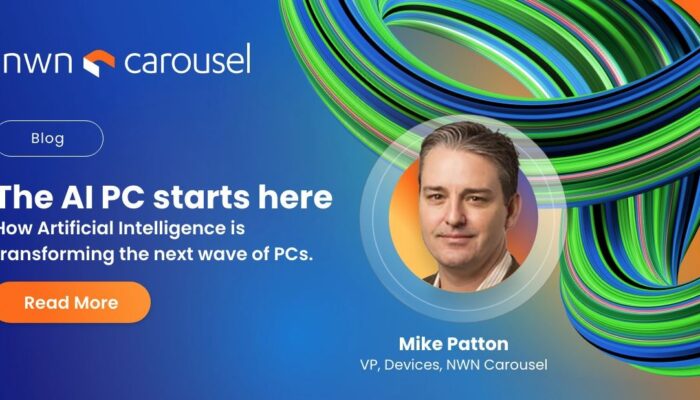Shedding light on the crucial importance of emergency response time
We’re honored to host guest blogger Mark J. Fletcher, ENP from 911inform, NWN Carousel’s trusted partner in Public Safety to shed light on the crucial benefits of new technology and architectures available in schools and public buildings designed to speed up emergency response times.
Together, NWN Carousel and 911inform have developed a comprehensive integrated cloud communications roadmap for our customers including School Districts, US Cities, County and local 9-1-1 PSAPs, State Police organizations, Police, Fire, and EMS Dispatch Centers, large universities, and airport emergency dispatch operations.
Over 12 years, NWN Carousel has expanded our Public Safety practice to where we serve 250 Public Safety Answering Points (PSAPs) across the US with 1900 call-taker/dispatcher positions in service today.
On our upcoming webinar, “When You Have Seconds to Respond: Holistic Technology Planning Saves Lives in Schools” together with 911inform, and Hank Hunt from the Kari Hunt Foundation, we’ll discuss empowering administrators to enhance school safety while adhering to new public safety regulations such as Alyssa’s Law, Kari’s Law, and RAY BAUM’s ACT.
Read on to learn more about Kari’s Law, named in memory of Kari Hunt, a significant piece of legislation that came into effect as a result of a tragic incident. This unfortunate event exposed the need for direct access to 911.
KARI’s LAW – THE WHAT
If you’re an IT administrator responsible for communications in a larger or even midsize enterprise, one of your responsibilities is managing the communications network. This involves the communications devices located on people’s desks, typically some remote or mobile application such as a softphone on a PC, and even remote work-from-home hard telephones, which may be similar or identical to what they have on their desks at work.
911inform aims to improve school safety, response time in cases of emergency
Watch on CBS News
These devices have an inherent capability that has become so ubiquitous that provisioning them correctly needs to be addressed. Every year, about 240 million people use their telephone to reach police, fire, or EMS in an emergency. When these calls are placed, the most critical piece of information that gets conveyed is location. But most people need to learn, or remember, that the telephone system cannot send location.
Is 911 Broken?
That wasn’t a mistake; you read that correctly. But 911 is not broken; IT administrators have access to highly intelligent communications platforms (the PBX) but lack the inherent knowledge around configuring them properly for emergency services calling.
In today’s environment, Public Safety establishes the caller’s location based on a lookup of the telephone number held in a Public Safety database. The location information in that database must be accurate and up to date. But before we even talk about that, access to 911 needs to be provisioned and working.
Accessing 911
Kari Hunt was a 31-year-old mother of three in Marshall, Texas. On December 1, 2013, when she needed help, her 9-year-old daughter knew exactly what to do, but no one ever told her that a nine was required for all outside calls on a PBX phone system. Because of this, her desperate calls for help never reached the outside world, and Kari died that day.
In most, if not all, PBX systems, it’s a simple programming task to allow 911 to be dialed without an access code. The situation becomes egregious when businesses who know about the issue get too lazy to provide it. So, we get forced to return to the adage, “Laws exist for when common sense fails.”
The WHY
Most people will have the opportunity to dial 911 at some point, either for themselves or someone else. It could be a family member at home or a traffic accident you pass by on your way home from work. In either case, 911 are the digits that pop into your head. It is proven to be one of the most popular and well-known brands in the world. Based on that, it’s easy to understand how a 9-year-old panicking about her mother’s well-being never hesitated to read a placard on the phone or a warning label on a sticker. She picked up the phone, dialed 911, and got a fast, busy signal. Not only did she do this once, but four times, desperately trying to save her mother’s life.
One would hope that based on this horrific story and the ability to correct the problem with some simple programming, they would scramble to fix access to 911. But it took 4.5 long years lobbying Congress to push legislation through to the White House, which was finally signed into law on the 50th anniversary of the first 911 call ever made in Haleyville, Alabama.
But, even with access solved, the need for a dispatchable location becomes painfully apparent. And unfortunately, with today’s complex, highly mobile, and nomadic communications platforms, establishing that elusive information can become a challenge.
THE HOW
With new technology available and deployed today, using Next Generation 911, this problem is becoming more straightforward. As one of the benefits of new technology and architectures, even when the local 911 PSAP still uses the legacy equipment, the backend networks have evolved, and delivery of this new information is easily achieved via the Internet. This allows the enterprise to upgrade during equipment refresh cycles and get ahead of technology, providing investment protection for years.
Think of it this way: your local TV station broadcasts your favorite show in high-definition color. But you only have a black-and-white TV. You can still watch the programs in black-and-white, and when you finally save up enough money for a color TV, you’ll be able to watch the same show in color. When you eventually upgrade to an HD TV, your favorite show will be in color and high definition.
Wrapping it Up
In the past, fully functional 911 solutions were expensive, cumbersome, and provided bare basics for functionality. It’s like televisions in the 1960s. But today, thanks to modern communications and Internet technology, services are affordable, extremely efficient, and adaptable to how we live, work, and communicate. Safety and compliance are not only accessible, but they are also the right thing to do to protect your guests and employees.
Webinar: When You Have Seconds to Respond
Holistic Technology Planning Saves Lives in Schools
REGISTER



